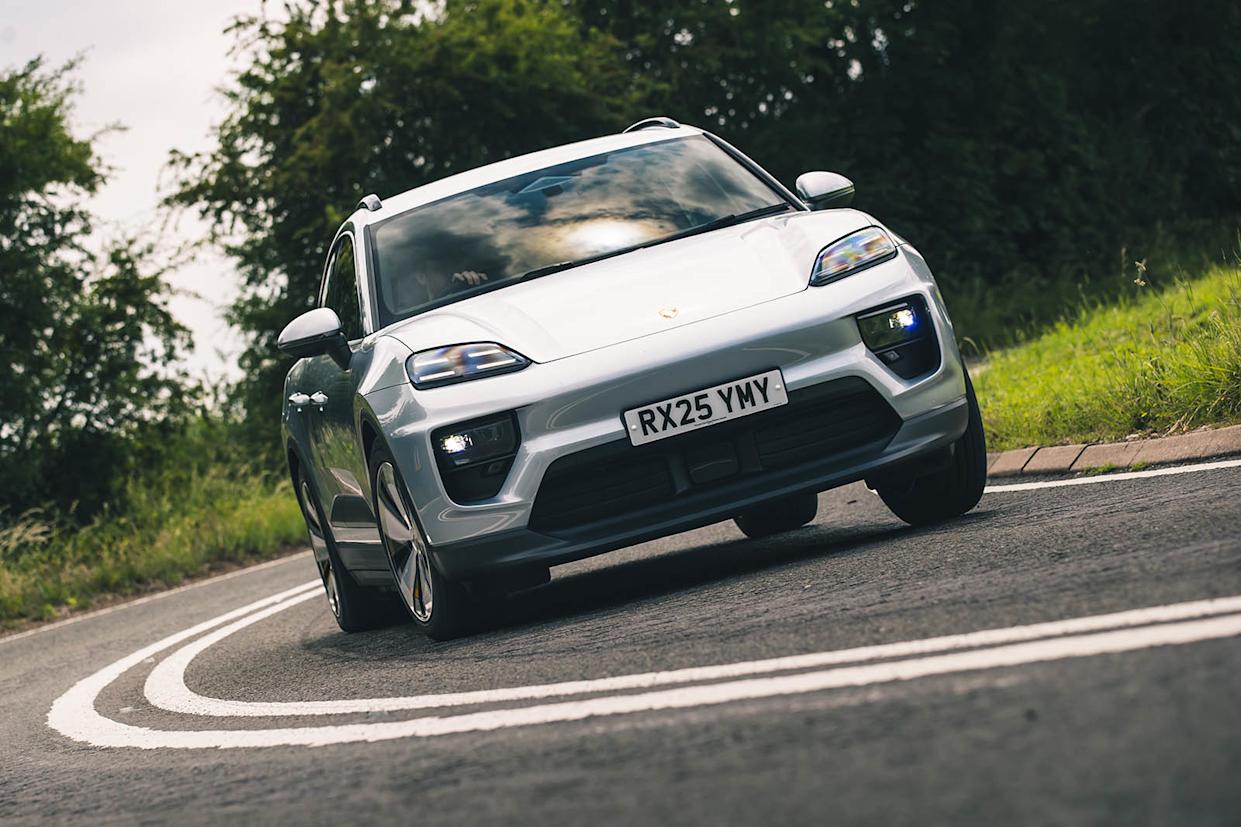
Introduction
The new Porsche Macan Electric has an unambiguous task ahead of it: to become a worthy successor of the celebrated Porsche Macan, only powered by electricity.
If only this was as simple as it sounds. For many, the existing combustion version of Porsche's junior SUV represents a class-dominating spider chart of performance, space, long-distance road manners and just enough fun to ensure you don't regret passing up that Cayman build slot.
And excellent as many electric cars now are, there can still exist some compromises in terms of range or weight and, perhaps most conspicuously here, for dynamic handling appeal compared with their combustion-engined peers.
Which means the Macan EV's biggest challenge may not be in defeating the Polestar 4 or the new Hyundai Ioniq 5 N but simply matching for broad appeal the petrol Macan, which will continue to grace showrooms for a while longer.
So how has Porsche gone about evolving this model for the electric world? We've had a few occasions to find out so far, having now tested all four versions of the car (the base Macan, Macan 4, Macan 4S and Macan Turbo) on European roads, then a Macan 4 and an almost entirely un-optioned Macan RWD in more depth in the UK.
We've covered the Turbo in a full instrumented road test, which you can read here; on this page, our numbers refer to the basic car.
Design & styling
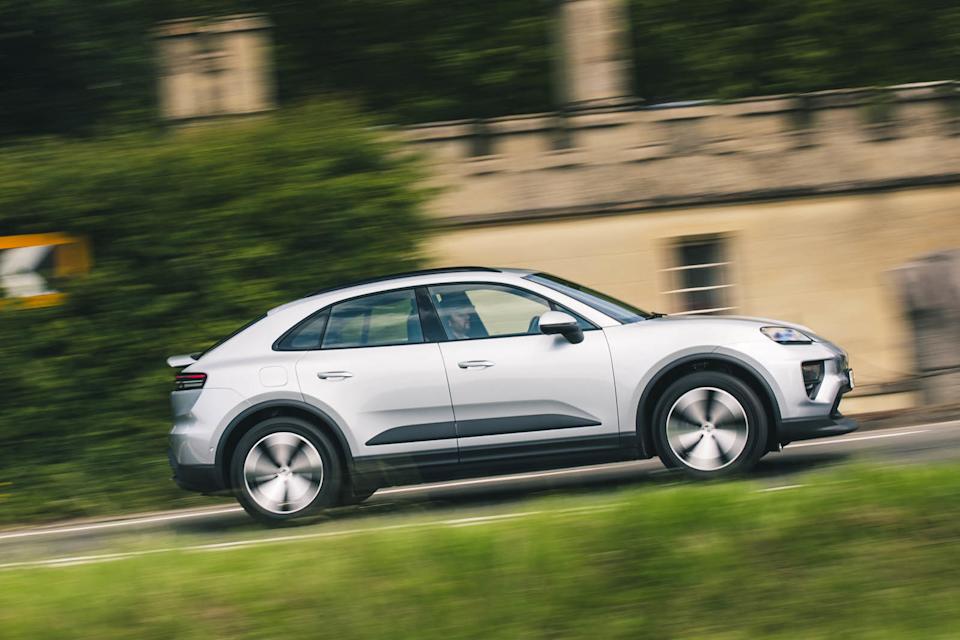
We've covered in detail the mechanical package of the Macan Electric in our Turbo review, so we won’t repeat too much here.
All variants sit on the same PPE platform, co-developed with Audi, and whether you spend big on the Macan or go for something lower down the range, you get the same 100kWh NMC battery pack and 270kW peak charging speed. (The pack essentially splits into halves during charging, each side drawing up to 135kW.)
Power in the entry-level Macan comes from a 335bhp PMSM whose windings are made of rectangular wire so that the amount of copper filling the stator grooves is as great as possible. It’s rear-mounted and, with an integrated inverter, is a more compact design than that in the 382bhp Macan 4 and anything above that point in the range (the 4S makes 443bhp and the Turbo an almighty 577bhp – and every model also summons a little extra power for launch-control starts).

Whatever the derivative, Porsche says the motor has been sited as far back in the chassis as possible to enable a notably rear-biased balance. As much is obvious if you ever see the car's platform without the bodyshell, and our as-tested front-rear weight distribution of 46:54 verifies the effects. Kerb weight for our basic Macan test car was 2262kg – within 2% of claimed.
Another difference between the RWD Macan tested here and 4WD cars is that the motor is integrated into the subframe; in 4WD versions, there is an arrangement that makes space for the PTV Plus diff lock.
But perhaps the greatest point of difference between the entry-level Macan and more tech-laden versions concerns the suspension. The basic Macan rides on steel springs and passive dampers. Even PASM, which brings different damping characteristics depending on the modes you’re in, is an £899 option, but this car doesn’t have it. (It’s also possible to option air springs, even on the entry-level car, as well as rear-axle steering).
Lastly, our test car has unusually generous sidewalls on its Michelin Pilot Sport EV tyres, shod to ‘diddy’ 20in rims. On the new Macan, 22in wheels are more commonly seen. They look more impressive, but are they the better dynamic choice? We'll soon see.
Interior
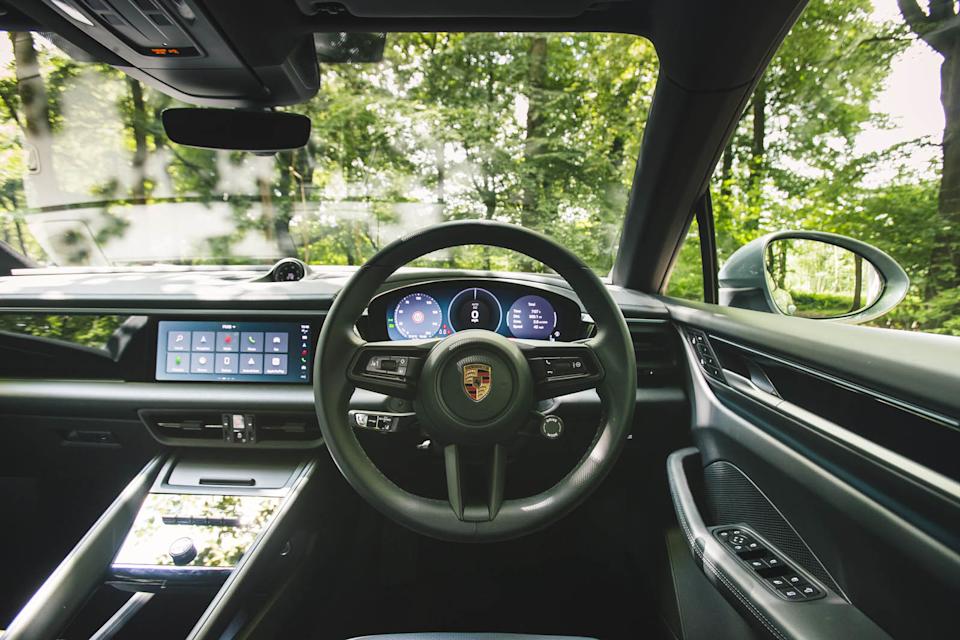
Inside, the Macan Electric takes its lead from the recently revised ICE Cayenne.
There's no cowling for the 12.6in driver's display, and there are a further two displays neatly recessed into the dashboard: one of 10.9in in the centre and, optionally, another one for the passenger.
It's a mostly lovely cabin, with a driving position that can be either surprisingly low-slung or usefully perched. We'd also option the 18-way Sports Seats Plus, which are fit to grace any 911 GT3, being so firm yet comfy and sculpted.
The centre console has some useful switches, but they are set in a slightly cheap-feeling gloss-black plastic panel, and there is a slight overabundance of inferior plastics, particularly if you don't spec the extended leather package.
An extra 96mm of wheelbase compared with the ICE Macan gives rear occupants a touch more leg room, if still not enough to match some of the EVs you could easily afford for Macan money. Boot space is better, though – competitive with the likes of the Mercedes-Benz EQE SUV and Polestar 3 before you count the 'frunk' space.
In terms of tech, the car comes with four USB-C ports and integration for both Android Auto and Apple CarPlay, as well as the new generation of Google Android-powered Porsche Communication Management (PCM) system, with voice assistance and slick charging-network information. For a more detailed description of that, head over to our Macan Turbo review.
There's also the option of an augmented reality head-up display, which projects sat-nav prompts at an effective distance of 10m ahead of the driver. Some will love this, but there's no doubt the graphics can feel overly dominant in your view forward – hardly suprising, given that that 10m distance corresponds to an 87in display.
Engines & performance
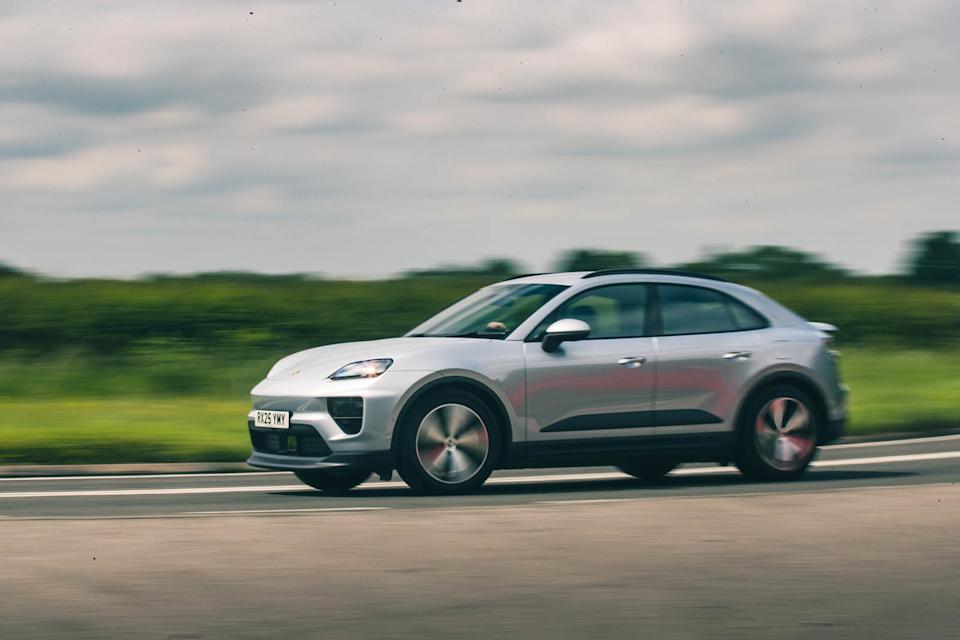
The Macan Electric's drivability in everyday environments is first-rate, whichever flavour you go for. The combination of steering speed, weight and accuracy, the gentle heft in its intuitively sprung accelerator pedal and the way in which it takes up what limited roll is permitted result in a cohesive whole that does have the hallmark of a Porsche.
As for performance? Well, easy access to tremendous power outputs and the advent of everyday EV models offering figures that not long ago were the preserve of Lamborghinis have put a focus on what feels ‘appropriate’. It can, in short, be tiring having 600bhp and a 3.5sec 0-60mph at your disposal, so the Macan Turbo certainly won't be for everyone.
With 335bhp on offer (rising to 355bhp in a Launch Control scenario), the basic Macan tested here is well endowed but not to the extent that you need to tiptoe around the accelerator. Flatten it at 30mph and 4.2sec later you will be at 70mph. Looking back through our road test records, that is the same time as Audi’s warbling 2011-model-year RS3 or the original Aston Martin Rapide. In short, it’s quick enough, and the Macan’s 5.2sec 0-60mph isn’t shabby either, while still feeling manageable.

The delivery is, as ever, neatly calibrated too. The Macan’s driveline doesn’t benefit from the two-speed gearbox of the Taycan saloon, which allows Porsche to precisely tune the acceleration curve, but both off-the-mark and roll-on response are clean, measured and highly intuitive. Even in Sport mode, when response is heightened, you’re never going to unwittingly knock your head into the headrest. Some people might expect their electric Porsche to offer truly razor-sharp accelerator response, but the basic Macan simply isn’t that sort of character.
It’s a similar story with the car’s regenerative braking. There’s no option of a hugely decelerative one-pedal setting, or even a plethora of graduated regen calibrations, as is now commonly seen. You simply have the default free-wheeling mode and an unobtrusively decelerative regen mode; harvesting the full 240kW requires you to push the pedal.
The lack of variety will irk some, but there’s something to be said for the manufacturer making the decisions for you, and executing neatly. In this Macan, you get in and go, using the firmly sprung, progressive brake pedal much as you would in a combustion Macan, only with an additional sliver of 'engine' braking to help slow you.
Ride & handling
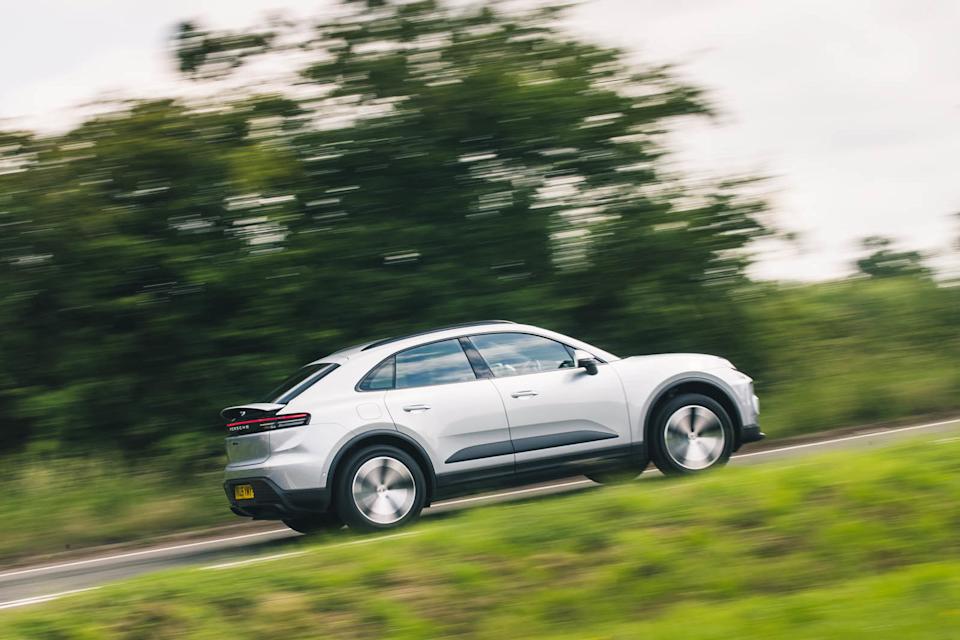
The basic Macan takes a moment to warm to in respect of its ride and handling characteristics. Even on the smallest wheels, with most generous sidewalls, it has a taut energy about it that’s not dissimilar to what you get from a BMW 3 Series riding on M Sport springs.
Ultimately, this is no bad thing. You have, after all, decided to buy a Porsche and a pleasingly high degree of control is to be expected. But with the car’s 2.2-tonne heft, it does make for a slightly robust gait when you’re simply trundling about on less than perfect road surfaces. The steering, superbly smooth and well sped, also feels somewhat inert and uniform in its weighting. The basic model can, in short, feel a bit ordinary on early acquaintance.
It doesn’t last long. Not if you try to enjoy the car, rather than wonder whether you might in fact have preferred a Q6 Sportback E-tron. On a good road surface, the Macan shows a fine blend of pliancy and control, behaving predictably and parsing body roll out in a calculated but communicative fashion. You can easily discern what the weight is doing and where the balance is. It’s fun to flow along, and at speed you can also better appreciate the clean, prompt off-centre steering response that is a Porsche calling card.
The ride coalesces at speed too, helped by those generous tyre sidewalls, and the basic Macan is now showing those sporting genes in a transparent, elegant manner that eluded the beefed-up, tech-heavy Turbo we've also tested.
In a way, this car’s a counterpoint to the Hyundai Ioniq 5 N – not as exciting and with a faintly nose-led cornering balance that’s anathema to the Korean car, but more mature and transparent. It’s only a tad underwhelming until it isn’t.
There’s an unexpected addendum to this handling assessment. As with every car we test, this Macan was driven to and beyond the limits of adhesion on the dry handling circuit at MIRA. Here, it proved spectacularly good fun, allowing itself to be backed into high-speed bends with a trailing throttle and on a nice, juicy rind of understeer before pivoting in balletic fashion in about as much oversteer as you’d ever want. Truly, the rear-driven Macan transitions beautifully and reminded one tester of larking about with a Lotus Carlton on a damp race track. Still waters, eh?
Back to prosaic matters, the basic Macan proved notably quieter at all speeds than the Turbo, which, we assume, is largely down its narrower tyres, although the marginally less aggressive bodywork will certainly help. A figure of 63dBA at 70mph is only slightly greater than our figure for the Mercedes EQS 450+ saloon and is therefore very quiet indeed.
Of course, depending on which Macan you pick, there are several suspension systems to choose from beyond the entirely passive setup (that is, non-adaptive dampers and coil springs) of our basic Macan test car.
Conventional wisdom suggests that air springs should improve the ride on poorer British roads, but we've not always found that to be the case. It would certainly be worth trying a so-equipped Macan before you ticked the relevant options boxes. The adaptively damped, steel-sprung 4 is firm while staying away from being uncomfortable, and there is an honestly about the way it rides, even if you will need to accept a bit of pitching and head-toss.
Further up the range, the 4S is feels a good deal quicker than the 4, and a shade more grippy and composed (PASM adaptive dampers come as standard here, but for the best outright body control go for that air suspension), but whether it is any more involving depends a lot on how much you're spending on options.
A 4S with optional air springs, four-wheel steering and PTV+ should certainly have plenty of tricks up its sleeve; but, in our experience so far, a purer single-motor Macan still feels decently brisk, can be just as much fun when cornering and is probably slightly more refined with it. 'Try before you buy' has rarely carried more weight.
MPG & running costs
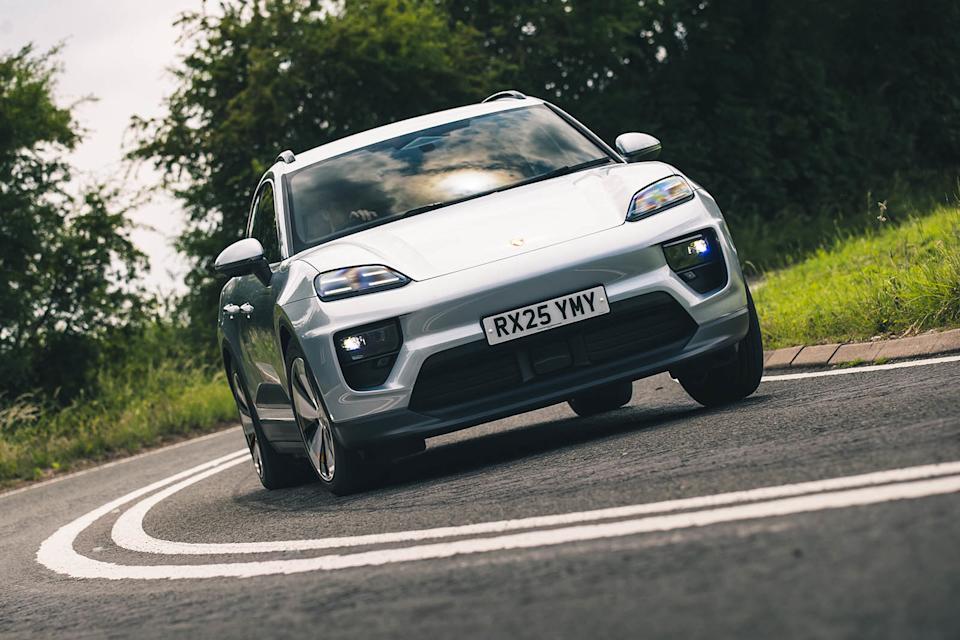
With a maximum charging speed of 270kW, the Macan Electric doesn't quite match the 320kW of the revised Taycan, but is still very fast indeed.
As for price, the Macan opens up at £68,500. The Macan 4 is less than £3000 more expensive, while the better-equipped Macan Turbo costs from £95,000 and the Macan 4S slots in between.
Porsche’s pricing for the Macan appears high but is not unusual in the premium sector. A single-motor Polestar 3 with less performance but more range starts at £68,000 and BMW’s iX3 costs £65,000 and is due to be replaced by the promising Neue Klasse version, which will cost more still.

Equally, the Macan is conspicuously undercut by the Tesla Model Y (the AWD Long Range version costs £52,000), and of course there’s the fabulously engaging Ioniq 5 N for £65,000. Also consider that few if any rivals have greater potential for optional spend.
Against the claimed 270kW peak charging rate, our test car managed a brief initial stint above 260kW and settled to around 165kW by the 50% point. Interestingly, the Turbo did notably better, remaining at 220kW or so at the 50% point, and in cooler conditions. We can’t say why this is.
Where the most basic Macan performed notably well was in our ‘everyday’ economy test. Its 4.6mpkWh figure translates to a range of 437 miles. Owners also get a three-year subscription to Porsche’s Charging Service Plus, with its preferential public rates.

Verdict

The Macan Electric is seriously complete and capable electric SUV – one that hits real high notes in many of the areas you'd expect. It's also one that, just like the flagship Taycan, has a reassuringly deep-seated Porsche feel about it - in spite of what mechanical character and richness its electric powertrain may lack.
The kind of dynamic competitive dominance that’s been enjoyed by the Taycan over the last few years does look set to elude it, however - as much as that would have been near-impossible to repeat on a car like this.
The Macan certainly has plenty of Porsche's dynamic hallmarks about its balanced, composed handling, taut body control and tactile, enticing steering. This is especially true for the basic RWD versoin. But it doesn't completely redefine dynamic benchmarks - among cars like the Polestar 3, BMW iX3 and Q6 E-tron, which are all comparable for driver appeal - in the way some might have expected, of a Porsche first and a Macan a close second.
Even so, is the dynamic benchmark in this class, and even the cheapest Macan has enough of a sporting selling point to keep the Porsche faithful at least mildly entertained -and, like the Taycan, it will reward plenty of savvy customers who suspect that less may be more.
]]>
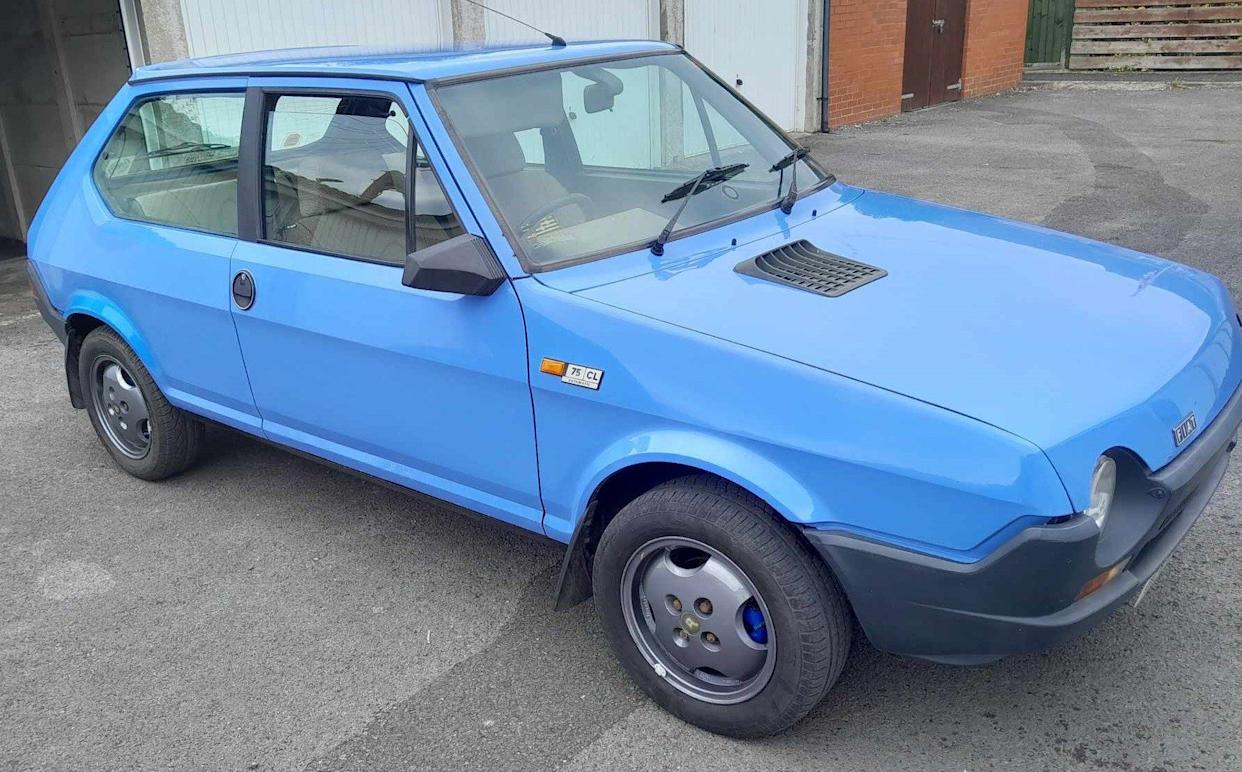

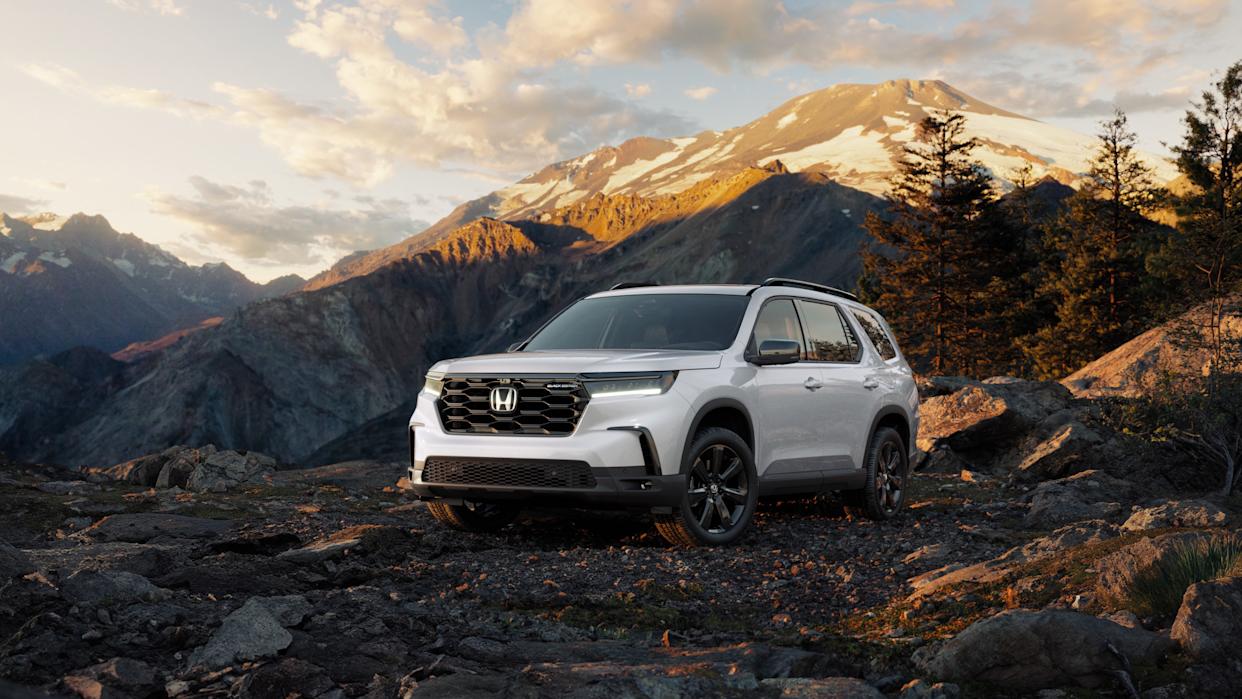
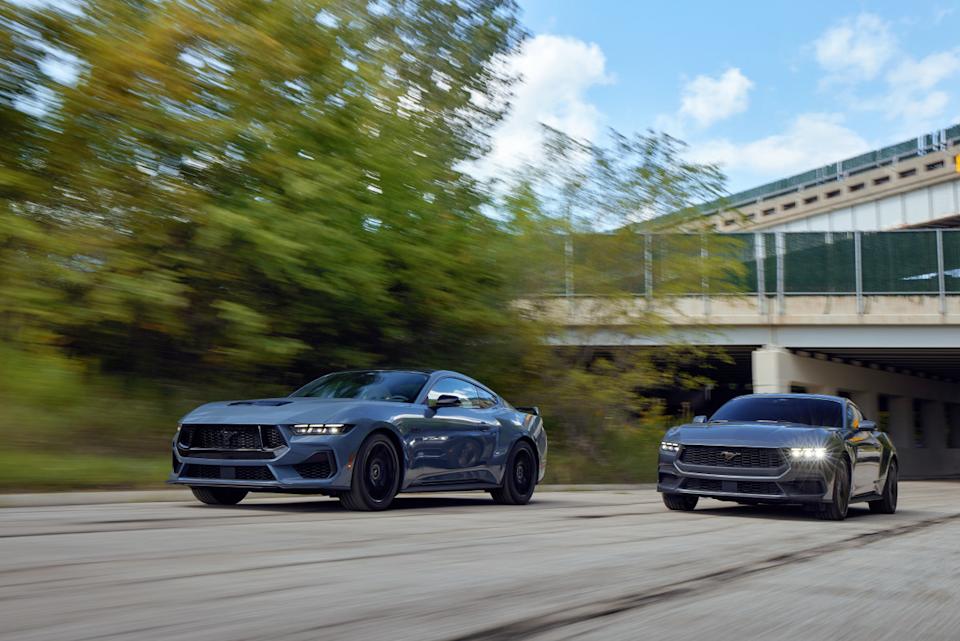
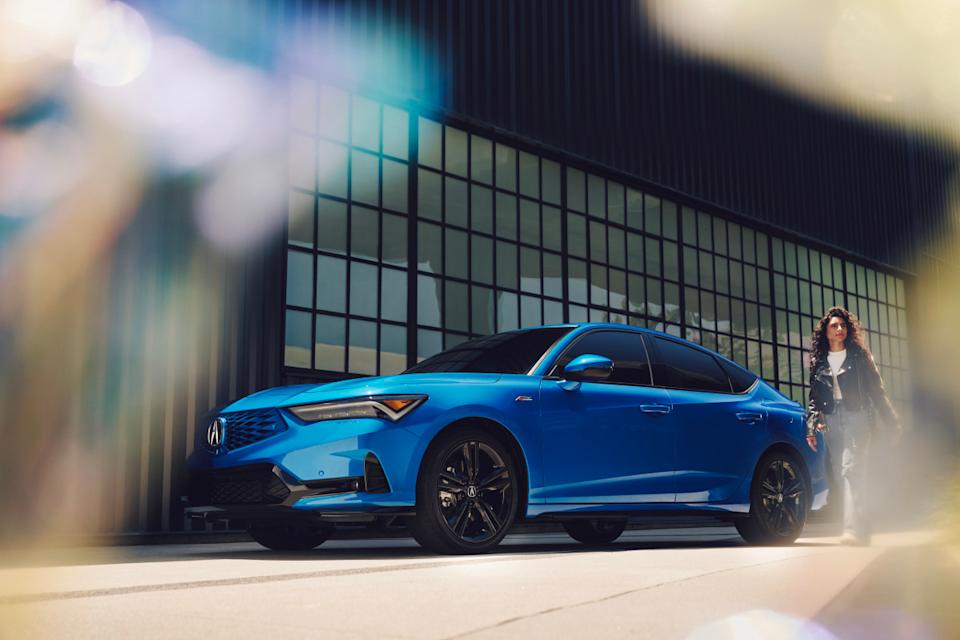
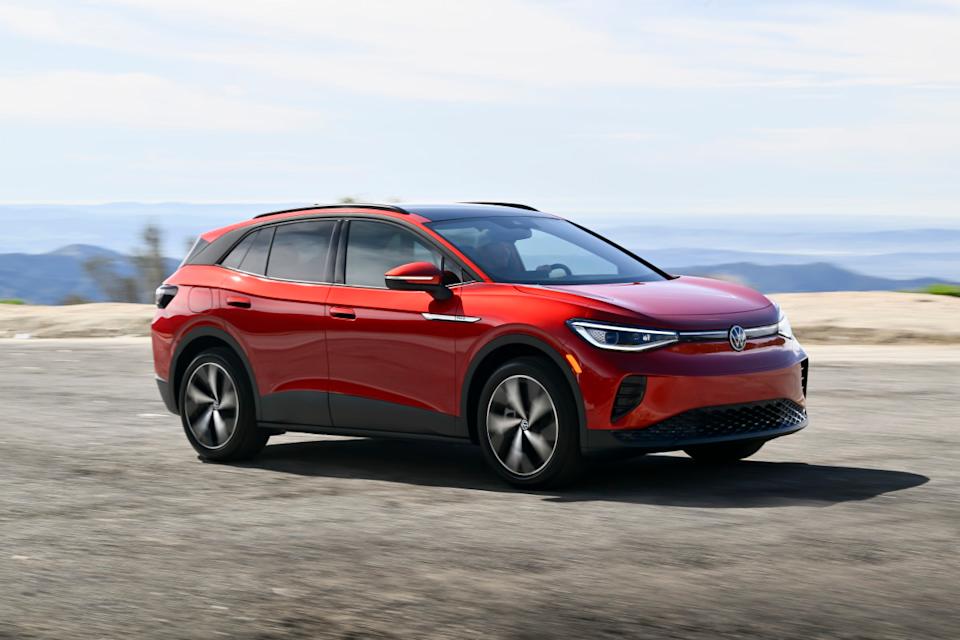

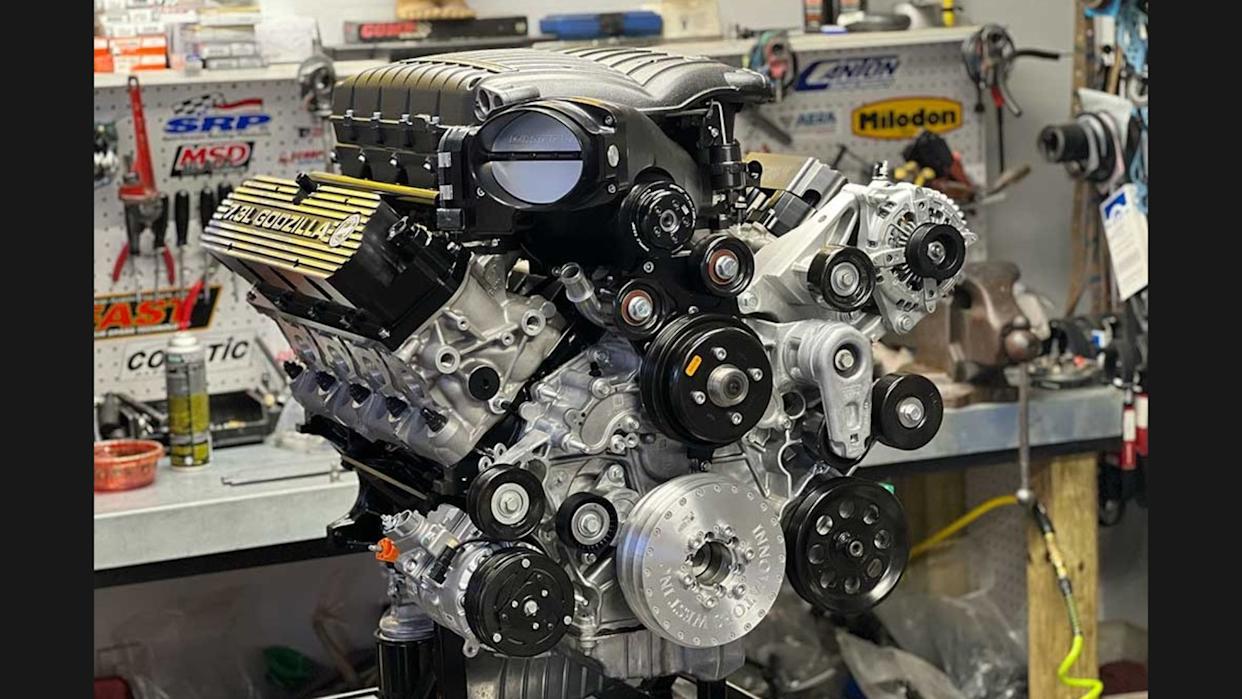
Comments